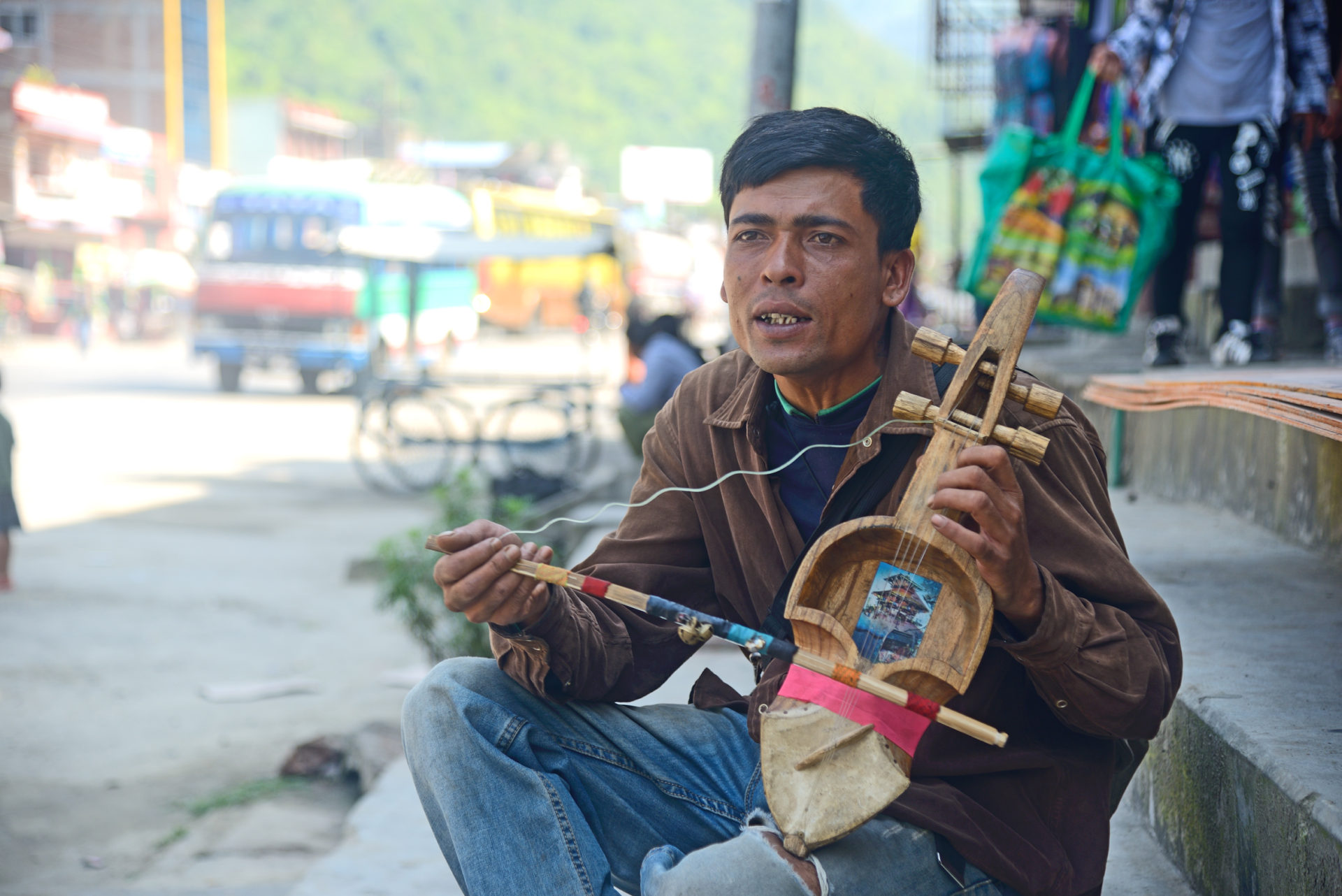Narbhupal Shah, who had been living at his maternal uncle’s house in Tanahun for a long time, was brought to Gorkha and hidden in Dhanubanese. According to historical records, it was Maniram Gayane who located him there and played a key role in bringing him to the Gorkha court.
When Prithvi Narayan Shah attacked Nuwakot and was defeated, left penniless and demoralized, it was Gayane who went door to door playing the sarangi, collecting money to support the king. After repeated defeats in Kirtipur, it was again Gayane who helped uncover vital intelligence that contributed to the eventual victory.
Today, the descendants of Maniram Gayane are struggling to reclaim their identity. While the clans and lineages of those who supported the unification campaign have risen to prominence, the Gandharva community—once instrumental but now marginalized—remains stuck in poverty and neglect. They say they have been exploited and left behind.
The Gandharva community, whose legacy dates back to the era of “Gandharvas singing, Apsaras dancing,” has been stripped of both wealth and recognition. The songs and music that once defined them are fading away.
“We spent centuries in despair after the Gandharva family, who served from Narbhupal Shah to Prithvi Narayan Shah, fell into disrepair. Now we are awakening and fighting back. We have established the Maniram Gayane Smriti Pratishthan,” says local resident Pampha Gandhari. “Through this foundation, we are seeking official recognition from the government.”
The foundation has started offering training to teach the younger generation how to play the sarangi. It has also initiated a women’s empowerment program. “Last year, we conducted a three-month basic training in sarangi playing, and we are continuing that this year as well,” Pampha explains. “Learning the sarangi is difficult, so we begin by teaching the basics.”
The Gandharva community resides primarily in Ghyampeshal and Palungtar, the headquarters of Gorkha. In Bhangbari and Dharapani of Gorkha Municipality–7, there are 22 Gandharva households. Determined to preserve their fading culture, they have appealed to the Gorkha Museum to display their traditional musical instruments and include a mannequin representing their cultural identity.
“The museum showcases the costumes of other castes, but none representing the Gandharvas,” says Mangal Prasad Gandharva, 84, chairman of the foundation. “We’ve requested them to exhibit our instruments—sarangi, arbaaz, kartal, jhantar, mujura, madal—but our pleas have gone unheard. No initiative has been taken to acknowledge our identity.”
Despite the lack of government support, community members continue working for upliftment. “We’ve traveled to Tanahun, Lamjung, Kaski, Palpa, Gulmi, and Dang to assess the condition of the Gandharva communities,” he adds.
A major challenge is the absence of youth participation. “After 20 years of age, most youths go abroad. Those who remain feel ashamed to carry the sarangi,” says local resident Durgadevi Gandhari. “That’s why we’re training young people and helping them understand the cultural importance of the sarangi.”
She also expressed frustration that while the government acknowledges the descendants of Bise Nagarchi, it has no similar recognition or policies for the Gandharva community, despite their historic contributions to the unification campaign.
Pampha Gandhari, who returned to her hometown after studying in Kathmandu, is now raising her voice for her community’s identity, rights, and recognition. She currently serves as a member of the executive committee of Gorkha Municipality and says the municipality has been running programs for the preservation of Gandharva musical instruments for the past two years.











